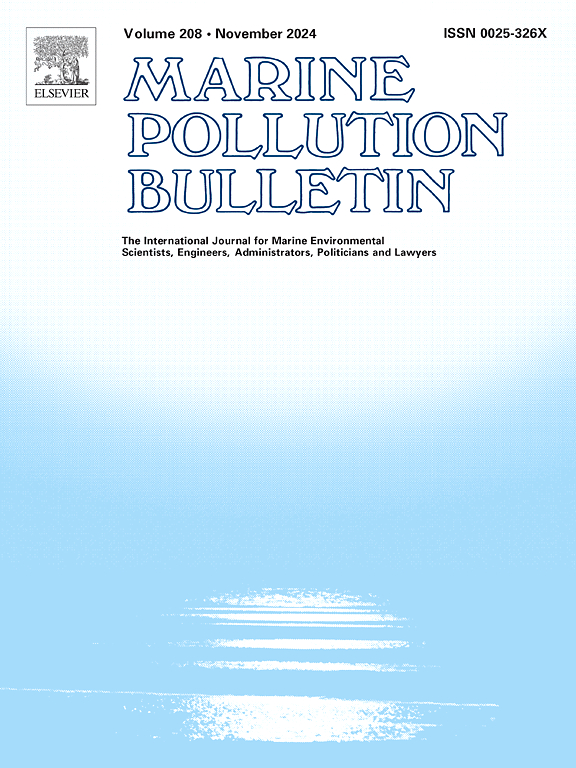2-Ethylhexyl-4-methoxycinnamate on marine and coastal environments: A comprehensive review of its environmental significance and biological impact
IF 5.3
3区 环境科学与生态学
Q1 ENVIRONMENTAL SCIENCES
引用次数: 0
Abstract
Marine and coastal environments are constantly subjected to increasing pressures associated with population growth, industrialization development, pollution and higher demand feeding society's consumerism. Among these pressures, there has been an increasing concern towards UV filters occurrence in aquatic ecosystems due to a greater use of personal care products (PCPs). 2-ethylhexyl-4-methoxycinnamate (EHMC) is one of the most used UV filters in sunscreen formulations, yet few reports address its effects in biota. This literature review intends to collect the available information concerning the environmental presence of EHMC in marine and coastal ecosystems and their effects in biota. The EHMC effects have been reported for the taxonomic groups: Actinomycetes, Alphaproteobacteria, Bacilli, Cytophagia, Flavobacteriia, Gammaproteobacteria, Actinopterygii, Anthozoa, Bacillariophyceae, Bivalvia, Branchiopoda, Coccolithophyceae, Echinoidea, Gastropoda, Malacostraca, Annelida and Thecostraca. The reported literature evaluated endpoints mainly related to development, viability, mortality, estrogenicity, gene transcription disruptions, biochemical alterations and morphophysiological changes. Based on the available information, there is still a clear need for further investigations related to EHMC and its toxicological effects on marine and coastal organisms.

2-乙基己基-4-甲氧基肉桂酸对海洋和沿海环境的影响:其环境意义和生物影响的综合综述。
海洋和沿海环境不断受到与人口增长、工业化发展、污染和社会消费主义更高需求相关的越来越大的压力。在这些压力中,由于越来越多地使用个人护理产品(pcp),人们越来越关注水生生态系统中紫外线过滤器的出现。2-乙基己基-4-甲氧基肉桂酸酯(EHMC)是防晒霜配方中最常用的紫外线过滤器之一,但很少有报道指出它对生物群的影响。本文旨在收集有关EHMC在海洋和沿海生态系统中的存在及其对生物群的影响的现有信息。已报道的EHMC效应的分类类群有:放线菌、α变形菌、杆菌、噬细胞菌、黄杆菌、γ变形菌、放线菌、珊瑚虫、硅藻、双壳目、鳃足目、球石藻目、棘皮目、腹足目、Malacostraca、Annelida和ecostraca。报道的文献评估的终点主要与发育、生存能力、死亡率、雌激素原性、基因转录中断、生化改变和形态生理变化有关。根据现有信息,显然仍需要进一步调查EHMC及其对海洋和沿海生物的毒理学影响。
本文章由计算机程序翻译,如有差异,请以英文原文为准。
求助全文
约1分钟内获得全文
求助全文
来源期刊

Marine pollution bulletin
环境科学-海洋与淡水生物学
CiteScore
10.20
自引率
15.50%
发文量
1077
审稿时长
68 days
期刊介绍:
Marine Pollution Bulletin is concerned with the rational use of maritime and marine resources in estuaries, the seas and oceans, as well as with documenting marine pollution and introducing new forms of measurement and analysis. A wide range of topics are discussed as news, comment, reviews and research reports, not only on effluent disposal and pollution control, but also on the management, economic aspects and protection of the marine environment in general.
 求助内容:
求助内容: 应助结果提醒方式:
应助结果提醒方式:


